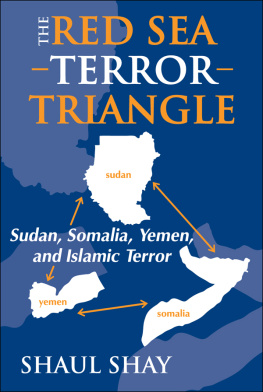In recent decades, the taking of hostages has proven to be a particularly effective tactic for Islamic terrorist organizations worldwide, including al Qaeda. The global jihad movement regards citizens of foreign (mainly western) countries as prime targets for abduction, although in fact local residents have constituted the majority of kidnapping victims.
This book analyzes Islamic terror abductions over the last 30 years in the Middle East (Lebanon, Syria, Iraq, Iran, Yemen, and Saudi Arabia), Asia (Afghanistan, Pakistan, India, and the Philippines), Africa (the Maghreb, the Sahel regions, and Somalia), and in Russia as a part of the RussianChechen conflict. Discussion also focuses on the abduction by Hizballah of Israeli soldiers, the Second Lebanon War of 2006, the Mumbai terror attack (2008), the Chechen hostage crises in Moscow and Beslan (2002 and 2004), and the kidnapping of employees of the Algerian In Amenas gas facility by al Qaeda of the Maghreb in 2013.
The role of Iran as a state sponsor of terrorism, and its patronage of terror organizations that utilize the tactic of abduction to promote Iranian interests in Lebanon and Iraq, is highlighted throughout.
Discussion focuses on the challenges faced by countries whose citizens have been abducted by Islamic terror organizations and their reactions to these challenges, and provides theoretical classifications of the phenomenon of terrorism in general and terror abduction in particular.
Shaul Shay is a Senior Research Fellow at the International Policy Institute for Counterterrorism at the Interdisciplinary Center in Herzliya, Israel, and served as the Deputy Head of the Israeli National Security Council. Among his published books are: Islamic Terror Abductions in the Middle East, The Shahids: Islam and Suicide Attacks, Islamic Terror and the Balkans, and Somalia between Jihad and Restoration.

Copyright Shaul Shay, 2014.
Published in the Sussex Academic e-Library, 2014.
SUSSEX ACADEMIC PRESS
PO Box 139
Eastbourne BN24 9BP, UK
and simultaneously in the United States of America and Canada
All rights reserved. Except for the quotation of short passages for the purposes of criticism and review, no part of this publication may be reproduced, stored in a retrieval system or transmitted in any form or by any means, electronic, mechanical, photocopying, recording or otherwise, without the prior permission of the publisher.
British Library Cataloguing in Publication Data
A CIP catalogue record for this book is available from the British Library.
Library of Congress Cataloging-in-Publication Data
Shay, Shaul.
Global jihad and the tactic of terror abduction : a comprehensive review of Islamic terrorist organizations / Shaul Shay.
pages cm
Includes bibliographical references and index.
ISBN 978-1-84519-611-0 (hardback)
ISBN 978-1-78284-142-5 (e-pub)
ISBN 978-1-78284-143-2 (e-mobi)
ISBN 978-1-78284-144-9 (e-pdf)
1. Political kidnapping. 2. Qaida (Organization) 3. Islamic fundamentalism. 4. Jihad. I. Title.
HV6431.S4683 2013
363.325dc23
2013028379
This e-book text has been prepared for electronic viewing. Some features, including tables and figures, might not display as in the print version, due to electronic conversion limitations and/or copyright strictures.
Preface
Occurring shortly before publication, the scope and scale of the September 2013 attacks in the Philippines and Kenya necessitated inclusion in a work of this nature. For discussion of these events, see the Epilogue.
The Mumbai terror assault of 26 November 2008 comprised eleven coordinated shooting, bombing, and hostage-taking attacks by members of the Pakistan-based Lashkar-e-Taiba militant Islamic organization; by its conclusion, 164 people (including foreign nationals) had been killed and at least 308 were wounded. The hostages are of use only as long as you do not come under fire, a Lashkar-e-Taiba supervisor instructed the gunmen by phone from Pakistan, adding: If you are still threatened, then dont saddle yourself with the burden of the hostages. Kill them immediately. A gunman replied: Yes, we shall do so accordingly, God willing. This grim conversation was just one detail subsequently unearthed by Indian authorities investigating the horrific events in Mumbai.
On 16 January 2013, al Qaeda-linked terrorists affiliated with a brigade led by Mokhtar Belmokhtar took more than eight hundred hostages at the Tigantourine gas facility near In-Amenas, Algeria. After four days, Algerian commandos raided the site in a rescue effort: at least thirty-nine foreign hostages were killed (along with an Algerian security guard), while twenty-nine terrorists were killed and three were captured. Algerian Prime Minister Abdelmalek Sellal portrayed the military assault on the Islamist kidnappers as a matter of national character and pride: The whole world has understood that the reaction was courageous, he said, calling the abductions an attack on the stability of Algeria. Algerians are not people who sell themselves out when the security of the country is at stake, there is no possible discussion. Debate over Algerian handling of one of the worst hostage-taking episodes in recent memory reflected conflicting ideas of how to manage such mass abductions in a post-9/11 age of worldwide suicidal terrorist acts.
Algerians and some western supporters argue that the loss of innocent lives is unavoidable when confronting fanatics who would kill their captives anyway, while others claim that modern technology can provide means to minimize the death toll.
The two examples above represent a sad reality in todays world we coexist daily with many factors that threaten both our safety and security. Among these dangers, terrorism (and terror abduction) represents a major threat to the well-being of individuals, families, businesses, and even states.
Kidnapping constitutes a central component in the attack repertoire of terror organizations worldwide. Since the 1980s, in the wake of the Islamic revolution in Iran and the ascent of a terror-supporting regime in that country, Islamic terror entities such as the Lebanese Hizballah organization and the Palestinian Hamas movement have become preeminent in the Middle East (indeed, in the world) in all matters connected to terror in general, and kidnappings in particular.
The first annual report on the UKs strategy for counter-terrorism stated that kidnapping for ransom became an increasingly common terrorist tactic during 200812: over 150 foreign nationals had been kidnapped by Islamist groups since 2008, but the number abducted in 2012 (almost fifty) was more than double the total in 2010.1 The director-general of the UK Office of Security and Counter-terrorism, Charles Farr, said that although Britain refuses to pay, other countries and companies do.2
This study addresses Islamic terror kidnappings in the following arenas:
- The Middle East: Israel (in the framework of the IsraeliHizballah conflict), Lebanon, Syria, Iraq, Iran, Yemen, and Saudi Arabia.
- Asia: Afghanistan, Pakistan, India, and the Philippines.
- Africa: the Maghreb, the Sahel regions, and Somalia.
- Russia: as a part of the RussianChechen conflict.
Islamic terror organizations acted, and continue to act, in these arenas, using kidnapping as a means to promote the goals of their organizations and patrons. Kidnapping is a serious criminal business, worth an estimated US$500 million a year (in 2010) and involving a wide range of political, security, social, and economic implications. Furthermore, it is one area which continues to grow when measured by the numbers of victims, criminal profits, and the geographic spread of the problem. Kidnapping is still relatively under-reported and is treated as a series of individual tragedies, rather than a symptom of a wider problem.














